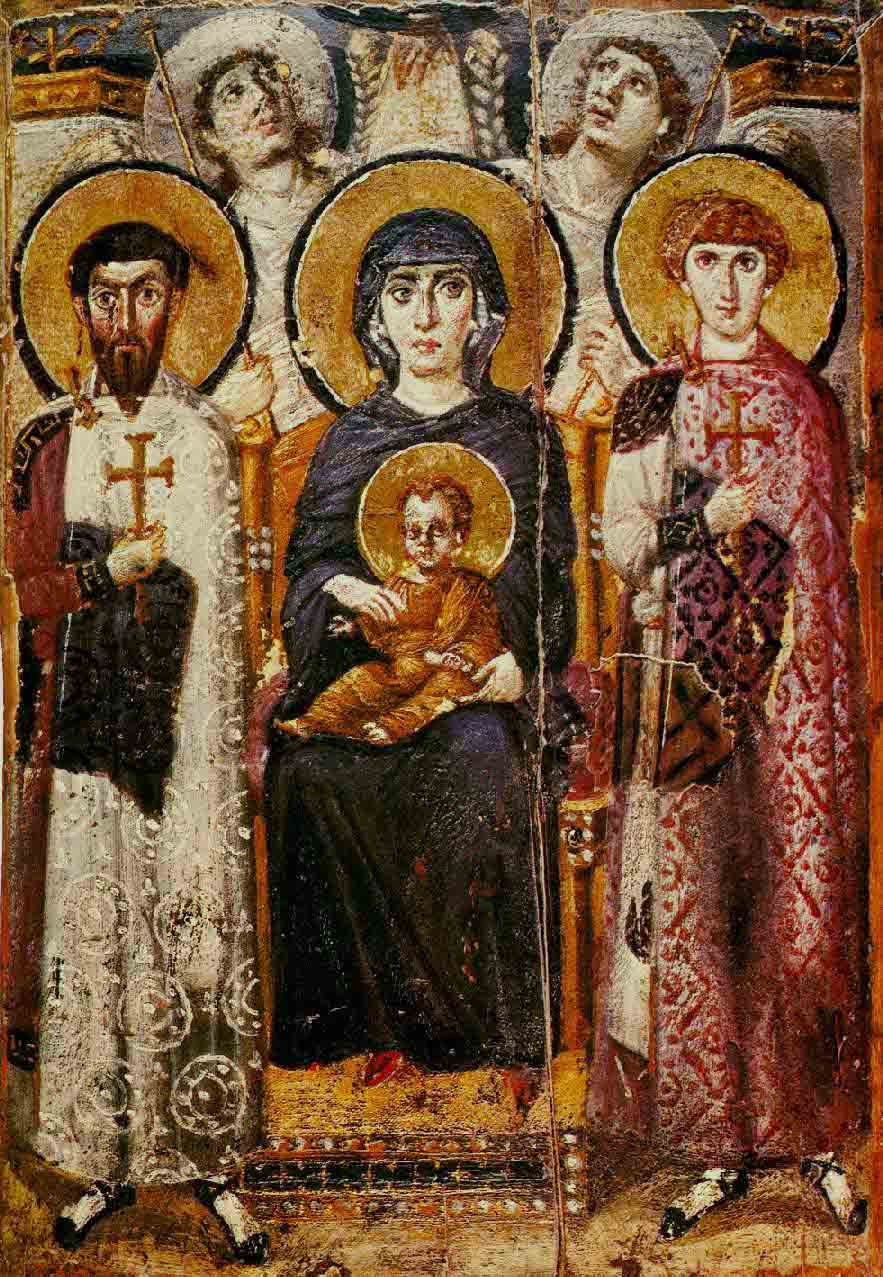
Inscribed Byzantine Greek Stone Dedicated To Mary Discovered in Israel
An ancient, inscribed Byzantine Greek stone has been discovered in Israel’s Negev desert with a rare Greek dedication to Maria, the Mother of God. The Byzantine Greek stone was found in Israel’s Nitzana National Park, located close to the Egyptian border. The Nitzana area is an important archaeological resource detailing the transitionary period from the Byzantine to the early Islamic period. It was on a hill topped by the towering remains of the ancient Nabatean city of Nitzana, that flourished during the Roman period, that archaeologists discovered the ancient Greek tombstone and the inscription reading, “Blessed Maria, who lived an immaculate life.”
According to a report in Haaretz the stone dates to the sixth or early seventh century AD. Tali Erickson-Gini is an archaeologist with the Israel Antiquities Authority (IAA) and in a statement he told the press that the settlement was first founded in the third century BC on a major Nabataean trade route. The Nabateans originally lived in the territory between Syria and Arabia and caravanned trade goods between Arabia and the Mediterranean. However, during the fifth and sixth centuries AD Nitzana served as a population center for all the villages and settlements in the vicinity.

The inscribed Byzantine Greek stone dedicated to the Virgin Mary, Mother of God, was found in the precinct of Nitzana National Park in southern Israel. (Mboesch / CC BY-SA 4.0)
The Byzantine Greek Stone’s Historical Location And History
Sixth and seventh century AD Greek and Arabic papyrus documents were discovered at the Nitzana site in the 1930s AD that provided details about a military fortress, churches, a monastery, and a roadside inn at the hilltop site. The facilities all served pilgrims traveling to the Saint Catherine's Monastery, the legendary site on biblical Mount Sinai, where god gave the Ten Commandments to Moses.
- Like a Virgin? The Controversial Account of Mary, Mother of Jesus
- An Empty Tomb and a Site Full of Faith: Where Was the Virgin Mary Buried?
- Is the Story of Christ Portrayed in the Unicorn Tapestries?
Haaretz reported in July that when Nitzana was part of the Byzantine Empire in the fifth century AD it was home to “a thriving regional wine industry.” However, “a volcanic winter and a plague in the middle of the sixth century may have devastated the area’s Christian communities.” Islamic forces eventually conquered the region in the seventh century AD and the citadel become a religious center for Muslims.
In 2017, the Jerusalem Post reported that Nitzana had become a successful eco-village known as the Nitzana Educational Eco-Village. Ecology and cultural exchange programs, with 300 full-time residential students, are conducted in the village. And the ancient settlement attracts roughly 17,000 students a year.
The Israel Antiquities Authority (IAA) has reported that the inscribed Byzantine Greek stone was found while a team of workers from the Israel Parks and Nature Authority's Project 500, which has been hiring people made jobless during the 2020 AD Covid-19 pandemic, were building new nature trails in the area.

Saint Catherine's Monastery and the pilgrimage routes that led to it were already popular with Virgin Mary worshippers in the 6th-7th century AD. (Joonas Plaan / CC BY 2.0)
The Rise And Fall Of Maria And The Byzantine Greek Stone
The Greek translation discovered on the ancient tombstone was first inspected and identified by Professor David Palmach, director of the Nitzana Educational Eco-Village. It was archaeologist Leah Di Segni of the Hebrew University in Jerusalem who translated the ancient inscription as reading, “Blessed Maria, who lived an immaculate life.”
Mary’s holy status, as the perpetual and immaculate virgin, was firmly fixed by the time Constantinople founded the Byzantine Empire in 330 AD. At the Council of Ephesus in 431 AD, Mary became “ the Theotokos,” not only the mother of Jesus, but also the Mother of God.
Pilgrimages and the worship of Mary at shrines and churches became a profitable enterprise in the 6th century AD. And it was in this century that the “Cult of the Virgin Mary” emerged. And it was in these highly popular years of reverence for the Virgin Mary that the Byzantine Greek stone was inscribed.

Icon of the enthroned Virgin Mary and Jesus surrounded by saints and angels from the 6th century AD, which is an especially important artwork at the Saint Catherine's Monastery in the Sinai. (Public domain)
The Dark Side Of The Virgin Mary
According to an article on Conversation.com “The Virgin cult cuts women off from the full, human reality of Mary, and so from full participation in the life of the church.” Mary was despiritualized in the early 20th century AD when the Vatican forbade her to be depicted in priestly vestments, and ordered that she only be presented as “the unattainable virgin-mother” and never as a leader.
Therefore, Mary was never a fully embodied woman in her own right. In the words of Voltaire, “if the Virgin Mary had not existed, it would have been necessary to invent her, to compensate for Christianity’s male bias.”
Top image: The inscribed ancient Byzantine Greek stone linked to the cult of the Virgin Mary, which was recently discovered in southern Israel. Source: Israel Antiquities Authority
By Ashley Cowie
















Comments
Hi All,
It's no secret that; I am a Christian, but, considering how many Mary's, there were made known in The Gospel's, are they sure it's "The Mary" is it possible that the gravesite could be Mary Madeleine, or could it be Moses' sister Miriam that they've found instead?
Hi All,
It's no secret that; I am a Christian, but, considering how many Mary's, there were made known in The Gospel's, are they sure it's "The Mary" is it possible that the gravesite could be Mary Madeleine, or could it be Moses' sister Miriam that they've found instead?